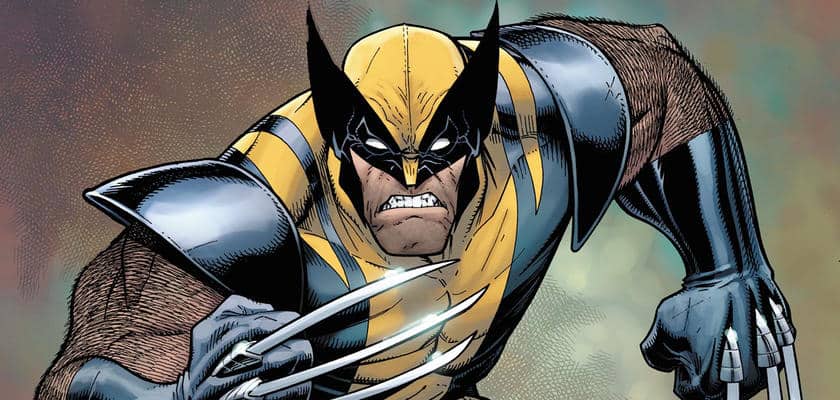Welcome back to The Pope’s Comics, our new regular column by award-winning novelist, poet, and Comic Watch contributor Bethany Pope! Bethany brings a wealth of knowledge on literature, LGBTQIA+ issues history, gender, comics, and so much more. We sincerely hope you enjoy!
This week, I’m examining the Hero Pattern as it applies to one of the most popular (and certainly among the most ubiquitous) characters in modern literature. Wolverine has been retconned and revamped so many times that it’s difficult to extract a clear narrative thread, but since that historical disjointedness plays an important role in the formation of that same character this was a fun exercise. 
This pattern is based upon The Hero: A study in Tradition, Myth and Dreams by Lord Raglan. As I’ve said many times before, this pattern is inherently sexist. I’ve revamped the most offensive points.
Here is the complete pattern, for comparison:
Incidents which occur with regularity in hero-myths of all cultures:
1. Hero’s mother is a royal virgin;
2. His father is a king, and
3. Often a near relative of his mother, but
4. The circumstances of his conception are unusual, and
5. He is also reputed to be the son of a god.
6. At birth an attempt is made, usually by his father or his maternal grand father to kill him, but
7. he is spirited away, and
8. Reared by foster -parents in a far country.
9. We are told nothing of his childhood, but
10. On reaching manhood he returns or goes to his future Kingdom.
11. After a victory over the king and/or a giant, dragon, or wild beast,
12. He marries a princess, often the daughter of his predecessor and
13. And becomes king.
14. For a time he reigns uneventfully and
15. Prescribes laws, but
16. Later he loses favor with the gods and/or his subjects, and
17. Is driven from the throne and city, after which
18. He meets with a mysterious death,
19. Often at the top of a hill,
20. His children, if any do not succeed him.
21. His body is not buried, but nevertheless
22. He has one or more holy sepulchres.
Here is the pattern, as it applies to Logan/James Howlett/Wolverine. As always, I’ve only elaborated on the points which directly apply to the character as he exists in the current continuity.
1. Hero’s mother is a royal virgin;
James Howlett was born to an upper class woman; Elizabeth Howlett. Since he is the product of an extramarital affair (and since children who were born to upper class women outside of wedlock have a history of being depicted as the products of virgin births) Logan checks this box.
2. His father is a king, and
Logan was raised by John Howlett, a man who served as the de-facto ruler of his small Canadian enclave. The role of the noble cuckold has a rich mythic history, particularly amongst cultures which were influenced by the Arthurian legend. Mallory, of course, presents Arthur as a variety of Magnanimous Cuckold (shout-out to Robertson Davis’ magnificent Lyre of Orpheus, which deals with this story to great effect and at some considerable length) and he presents the archetype of the totally noble man as one who is utterly unsullied by human desire, and therefore impotent. This is a medieval christian understanding of sexuality, one which posits that holiness must be totally divorced from the flesh. If you fully belong to God, thou cannst not bone. The code of chivalry applied this to men as well as to women, though of course the former were not held to it as strictly as the latter — and other genders were not even considered. As Mallory’s Arthur has his role of husband usurped by his servant and dearest friend, so too is John Howlett’s role occupied by his low-born groundskeeper. It is interesting that, by this reckoning, nobility can be born from corruption (both Galahad and Logan had ‘impure’ biological fathers) but nothing at all can be generated from sterile physical and spiritual purity.
4. The circumstances of his conception are unusual, and
Being a bastard isn’t all that rare, but the idea of a lower class man fathering a child on an upper class woman, whose husband then adopts the child is fairly rare — not to mention mythic.
5. He is also reputed to be the son of a god.
There was that whole weird wolf-spirit association in the Wolverine: Origins series. Best not to think about it too deeply. Or consider the fact that the author seems to have confused wolverines (in the ferret family) for wolves.
6. At birth an attempt is made, usually by his father or his maternal grandfather to kill him, but
Logan’s biological father did not attack him until puberty, but he did attempt to take his son’s life. The onset of puberty is, of course, a very psychologically important time, and this episode could be read as a dramatization of the conflict that male children (cis or trans) often feel for the parent who most closely mirrors their gender.

Daddy Issues
7. he is spirited away, and
Logan runs away from his decimated home with Rose, his first love and childhood companion.
8. Reared by foster-parents in a far country.
Rose and Logan spend their adolescence raising each other, scraping by in a logging town.
10. On reaching manhood he returns or goes to his future Kingdom.
After escaping from the Weapon X program and attempting to assassinate Charles Xavier (retcons, am I right?) Logan joins the X-Men — a hero team which he will frequently lead.
11. After a victory over the king and/or a giant, dragon, or wild beast,
This is probably best interpreted as his triumph over the Brood embryo the Queen implanted within his chest. The central struggle of that episode (and indeed of the character as a whole) was the identification and protection of his identity as a person. Son of man, can these bones live? Can the scattered fragments of who Logan was ever truly be integrated into a cohesive whole? The Brood Saga, with its focus on the dissolution of the personality illuminated through the horrors of forced physical transformation, was the first confirmation we got, as readers, that there was a variety of essential self within that mess of rage and trauma. The importance of that arc cannot be underestimated.
12. He marries a princess, often the daughter of his predecessor and
We can discount his aborted engagement to Marioko, since that was never physically or legally consummated. Currently, Logan is one-third of a polyamorous thrupple consisting of his Anima figure (Jean Grey) and the embodiment of his Jungian Shadow (Scott Summers). By embracing his psychological opposite (Summers, a man he once hated) he has been able to integrate his Anima, a woman who had previously rebuffed him as fiercely as she occasionally encouraged his advances.

Rolling in clover.
13. And becomes king.
Wolverine has long been one of the most important (or at least profitable) characters in the X-Men books. Within the text, he fulfills much the same role.
14. For a time he reigns uneventfully and
I would say that the scene of Wolverine rolling around in the clover with a pack of Children after the founding of Krakoa fulfills this requirement.
15. Prescribes laws, but
As the team leader, both of the X-Men, the Xavier School, and X-Force, Logan quite literally laid down the law.
16. Later he loses favor with the gods and/or his subjects, and
Even a best selling character occasionally loses his appeal. Some time after Wolverine had reached peak marvel saturation, the readers grew bored. In the text, this resulted in him losing his healing factor.
17. Is driven from the throne and city, after which
As his death approached, Wolverine withdrew from the books, until his ‘final’ (for a few years, anyway) series.
18. He meets with a mysterious death,
Wolverine died, coated in Adamantium, becoming essentially a monument to himself.

Ouchies!
19. Often at the top of a hill,
This death was literally on the top of a hill.
20. His children, if any, do not succeed him.
Wolverine doesn’t get this point. His daughter Laura (originally believed to be a clone, but actually Logan’s biological daughter) took up the Wolverine mantle after Logan’s death. She is the best Wolverine. I will allow no dissent on this point. I am including this bullet point for the sole purpose of stating that very obvious fact.
21. His body is not buried, but nevertheless
Logan’s Adamantium shell was placed in a Shinto temple in the Canadian wilds. He was actually eventually buried, but he didn’t remain underground long enough for this detraction to count.
22. He has one or more holy sepulchres.
He had a literal temple, dedicated to him.
Logan scores a grand total of 19 points by this measure. It’s clear, regardless of measure, that this is a character who has taken on substantial mythological importance in our current culture.


Poet, novelist, fencer, pirate, Za-Za, and Comic Watch regular contributor Bethany Pope lives in China. They also hold an MA and PhD in creative writing. Their latest novel, The Hungry and the Lost, goes on sale December 1, 2021 from Parthian Books. You can follow them on Twitter at @theMasqueWriter.





